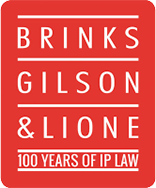In Vivint, Inc. v. Alarm.com, Inc., the Federal Circuit reversed a claim construction by the Patent Trial and Appeal Board ("PTAB") which “suggest[ed] the opposite” of the teachings of the patents at issue, and gave guidance to practitioners on when the Board’s reliance on expert testimony entitles the Board’s construction to deference. The Court’s non-precedential opinion is consistent with a string of recent decisions stressing the PTAB’s obligation to adequately explain its decisions.
Vivint’s patents are directed to systems and methods for remotely monitoring home equipment, such as an HVAC system. “Communication device identification codes” are assigned to the user’s remote devices, and the system notifies a particular user in case of the equipment’s malfunction through “message profiles” (e.g., settings to notify different users if a malfunction occurs during the day versus at night). The Board construed “communication device identification codes” as “something ‘capable of uniquely identifying communication devices,’” which the Board found included either a device ID or a serial number of a device (variables from one of Vivint’s patent’s figures), but excluded phone numbers and email addresses.
The Federal Circuit reversed the Board’s construction, pointing out that Vivint’s patents did not define “communication device identification codes,” and that the exclusion of phone numbers or email addresses as identification codes “defie[d] the patents’ teachings” which “expressly [taught] that a phone number can uniquely identify a . . . communication device.” The Court explained:
Even assuming [the Board’s construction] is correct, however, the Board’s conclusion that a phone number or email address cannot uniquely identify a communication device defies the patents’ teachings. For example, both patents explain that a mobile identification number refers to a device in the same way that a phone number refers to a cellular phone, i.e. a communication device. . . . But the Board’s construction suggests the opposite. . . . That the ’123 patent includes “Device ID” and “Serial Number” variables in a particular figure, for example, suggests these variables might also be used to identify communication devices. It does not suggest that phone numbers and email addresses cannot also do so.
The Court also rejected Vivint’s assertion that the Board’s construction was “entitled to deference because it relied on extrinsic evidence,” Vivint’s expert testimony. The Court found that the Board’s construction was “without reference to any extrinsic evidence,” finding that although “[t]he Board did credit Vivint’s expert,” it did so “only in applying its construction . . . to the prior art.” As further support, the Court pointed to the Board’s statement that its construction was “[b]ased on [its] review of the claims and Specification of the ’601 patent.”
Takeaways:
Vivint clarifies for practitioners that expert testimony applying a construed term may not constitute a factual finding entitled to deference on appeal, as opposed to expert testimony that is cited in support of the proper construction itself. This distinction may be especially impactful in view of the Court’s “substantial evidence” standard of review for findings of fact, which is “such relevant evidence as a reasonable mind might accept as adequate to support a conclusion.”
Vivint is also in line with a string of recent Federal Circuit decisions stressing the PTAB’s obligation to “set forth a sufficiently detailed explanation of its determinations both to enable meaningful judicial review and to prevent judicial intrusion on agency authority.” Rovalma, S.A. v. Böhler-Edelstahl GmbH & Co. KG, 856 F.3d 1019, 1024 (Fed. Cir. 2017). See, e.g., Icon Health & Fitness, Inc. v. Strava, Inc., 849 F.3d 1034, 1042-48 (Fed. Cir. 2017) (finding Board’s adoption of petitioner’s brief did not “transform [the petitioner’s] attorney argument into factual findings or supply the requisite explanation that must accompany such findings”); In re Van Os, 844 F.3d 1359, 1361 (Fed. Cir. 2017) (Board’s finding that it would have been intuitive to combine prior art lacked the requisite reasoning because “[a]bsent some articulated rationale, a finding that a combination of prior art would have been ‘common sense’ or ‘intuitive’ is no different than merely stating the combination ‘would have been obvious.’”); Emerson Elec. Co. v. SIPCO, LLC, No. 2017-1866, 2018 U.S. App. LEXIS 24499, at *1 (Fed. Cir. Aug. 29, 2018) (non-precedential) (“Because the Board did not adequately explain its reasoning on a point that was central to its analysis and its conclusion on that point was contrary to another Board opinion on nearly identical facts, we vacate the Board’s determination as to the appealed claims and remand for further proceedings.”). Practitioners preparing an appeal strategy would do well to keep in mind the Court’s focus on the PTAB’s obligation to fully explain its determinations.
Citation: Vivint, Inc. v. Alarm.com, Inc., ___ F.3d ___, 2018 U.S. App. Lexis 35817 (Fed. Cir. Dec. 20, 2018).





 />i
/>i

